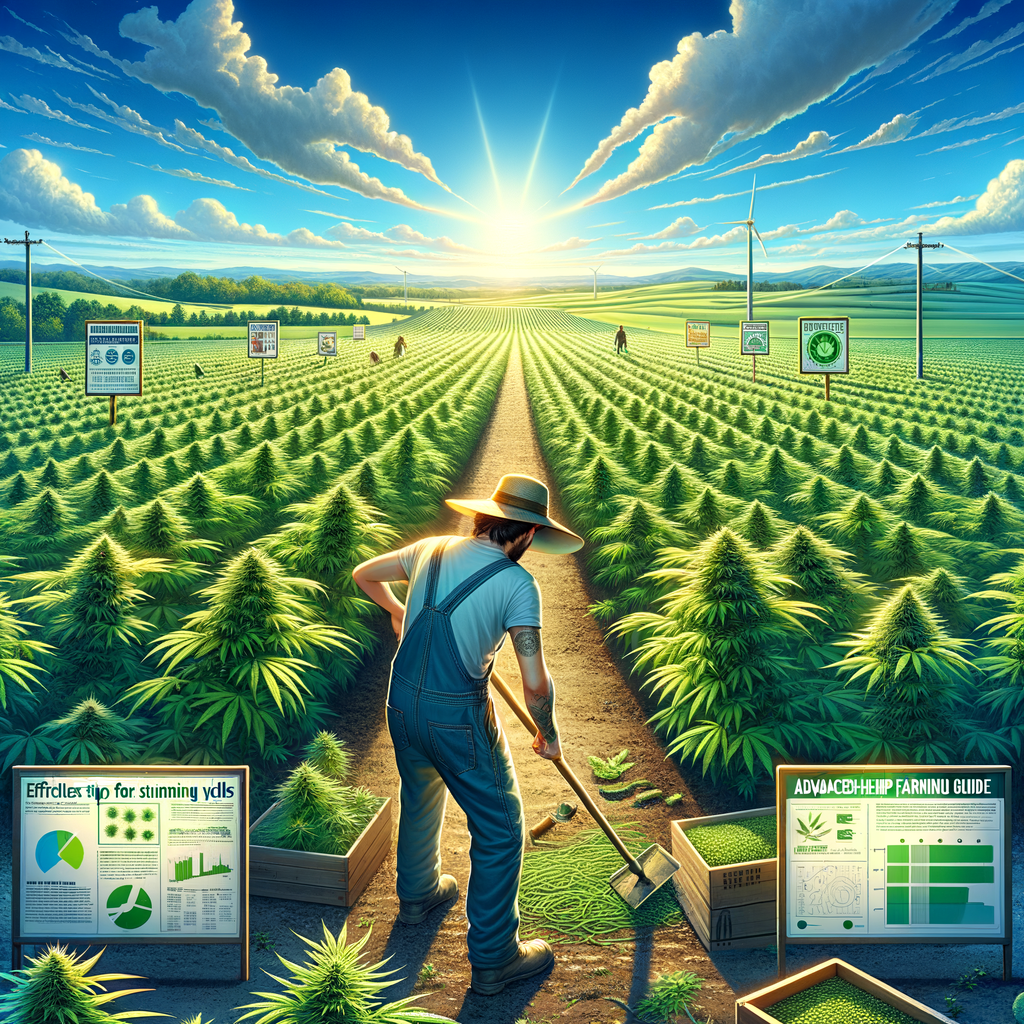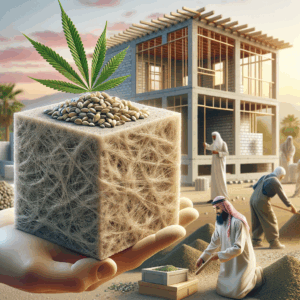
Hemp Farming Guide: Effortless Tips for Stunning Yields
- Understanding Hemp: A Brief Overview
- Getting Started: Choosing the Right Seeds
- Ideal Growing Conditions: Soil and Climate
- Preparing Your Farm: Land and Equipment
- Planting Techniques: Timing and Spacing
- Cultivating Hemp: Best Practices for Growth
- Nutrient Management: Fertilizers and Amendments
- Pest and Disease Control: Prevention is Key
- The Harvest: Knowing When to Cut
- Post-Harvest: Storage and Processing
- Understanding Regulations: Legal Considerations
- Marketing Your Hemp: Finding Buyers
- Summary: Key Takeaways for Successful Hemp Farming
- Frequently Asked Questions (FAQs)
- References
Understanding Hemp: A Brief Overview
Hemp is more than just a trend; it’s a versatile crop that has captured the interest of farmers around the world. Known for its fast growth and numerous uses, hemp belongs to the Cannabis sativa family. Unlike its cousin marijuana, hemp has low levels of THC, making it safe and suitable for various applications, including textiles, food, and biofuels. Understanding this distinction is crucial because it influences everything from farming practices to market potential.
As the demand for sustainable and eco-friendly products grows, hemp has found its niche. This plant enriches the soil, requires less water than most crops, and can yield multiple harvests in a single season. With its eco-friendly properties and diverse applications, hemp farming presents a lucrative opportunity for farmers seeking to diversify their operations and tap into a burgeoning market.
Getting Started: Choosing the Right Seeds
When beginning your hemp farming journey, the first step lies in selecting the right seeds. Seeds determine many aspects of your crop, from yield to overall performance. There are primarily two types of hemp seeds: fiber and grain. Fiber seeds produce tall plants best for textile or construction use, while grain seeds produce shorter plants suitable for oil and food products.
Consider your farming goals. If you want to focus on textile production, select a fiber variety. Conversely, if your aim is to harvest seeds for oil or food, choose a grain variety. Additionally, ensure that the seeds are certified and meet local regulations. This is crucial, as different regions have distinct legal requirements for hemp production.
Ideal Growing Conditions: Soil and Climate
Hemp thrives in well-drained, loamy soil with a pH level between 6.0 and 7.0. Amending your soil with organic matter, such as compost, can significantly improve nutrient content and moisture retention. Soil testing is essential to determine the current nutrient levels and pH, allowing you to adjust accordingly.
Temperature plays a vital role in the growth of hemp. Ideally, hemp grows best in a climate where the temperature ranges between 60°F and 70°F. Regions with long, sunny days and cool nights foster ideal conditions for your plants. Moreover, hemp requires consistent rainfall or moisture, making irrigation systems particularly useful in drier areas.
Preparing Your Farm: Land and Equipment
Preparation is key to a successful hemp harvest. Start by clearing your land of weeds and debris, which can compete with your hemp. Tilling the soil before planting promotes oxygen flow and breaks up compaction. A well-prepared field leads to healthier plants and better yields.
You’ll also need the right equipment. Basic tools include seeders, tractors, and irrigation systems. Investing in quality equipment ensures more efficient planting and maintenance. Proper equipment maintains the health of your crop and saves you time and labor in the long run.
Planting Techniques: Timing and Spacing
Knowing when and how to plant your seeds can significantly impact your yield. The best planting time is usually in the spring after the last frost. A soil temperature of at least 60°F is essential for seed germination, ensuring that your plants sprout healthily.
Space your seeds at least 6 to 12 inches apart in rows. This distance allows for healthier growth and minimizes competition for nutrients. For larger fields, you may want to utilize planting machines to streamline the process.
Cultivating Hemp: Best Practices for Growth
Once your seeds are in the ground, maintaining them is crucial. A consistent watering schedule is essential, especially during dry spells. Hemp thrives with approximately 20 to 25 inches of water annually. Drip irrigation can be an efficient way to deliver moisture directly to each plant.
Weed management goes hand in hand with good watering practices. Mulching can suppress weed growth while retaining soil moisture. You might consider employing cover crops or intercropping strategies to improve soil health and reduce weed competition.
Nutrient Management: Fertilizers and Amendments
Hemp is a nutrient-hungry plant. It typically requires nitrogen, phosphorus, potassium, and various micronutrients. Conduct regular soil tests to understand nutrient deficiencies and amend your soil accordingly. Organic fertilizers can promote healthy growth while minimizing your environmental footprint.
You can also implement a fertilization schedule based on the growth stages of your plants. Early in the cycle, high-nitrogen fertilizers may be beneficial, while potassium-rich fertilizers can support flowering and seed development later on.
Pest and Disease Control: Prevention is Key
Preventing pests and diseases can save you time and resources down the road. Regular monitoring is crucial. Common pests include aphids and spider mites, which can harm your crop if not addressed promptly. Consider introducing beneficial insects, like ladybugs, to control pest populations naturally.
For diseases, fungal issues such as powdery mildew can affect hemp. Ensure good airflow between plants and avoid overhead watering to minimize moisture on leaves. Explore organic fungicides as a treatment option if necessary.
The Harvest: Knowing When to Cut
Knowing when to harvest your hemp is critical to maximizing yields. For fiber hemp, look for plants that have reached maturity, typically around 100 to 120 days after planting. The stalk should be hollow and the fibers tightly packed.
For seed hemp, harvest when the seeds mature and turn brown. Monitor for seed moisture levels; ideally, you want them to be between 8-12% for optimal harvesting conditions. Timing your harvest accurately can prevent losses and enhance the quality of your crop.
Post-Harvest: Storage and Processing
Once you’ve harvested your hemp, proper storage is essential. Store seeds in cool, dark, and dry conditions to prevent spoilage. If you’re processing fibers, be sure they’re clean and dry before storage to avoid mold and degradation.
Processing might involve separating fibers from seeds or drying harvested plants. This stage is vital for creating high-quality products you can market.
Understanding Regulations: Legal Considerations
Legal considerations play a critical role in hemp farming. Before starting, research local and national laws regarding hemp cultivation in your area. Different regions have various regulations governing THC levels, licensing, and more.
Consult government websites or local agricultural offices for up-to-date information. They offer resources on required permits and guidelines to ensure compliance.
Marketing Your Hemp: Finding Buyers
Once you’ve produced your crop, marketing becomes your next challenge. The versatility of hemp opens numerous avenues, including textiles, food products, and cosmetics. Join local trade organizations to network with potential buyers.
Consider establishing an online presence or attending trade shows to promote your hemp. Offering samples can entice buyers and showcase the quality of your product.
Summary: Key Takeaways for Successful Hemp Farming
Adopting best practices in hemp farming can maximize your yields while enhancing your sustainability efforts. Here are the key points to remember:
1. Choose Quality Seeds: Understand the differences between fiber and grain varieties and select according to your goals.
2. Focus on Soil Health: Prepare and amend your soil for optimal growth; test regularly.
3. Water Wisely: Establish efficient irrigation practices and manage water carefully.
4. Monitor and Manage Pests: Regular checks and preventative measures can reduce crop damage.
5. Know When to Harvest: Timing affects quality; monitor your plants closely.
6. Understand Regulations: Stay informed about the legal landscape to avoid compliance issues.
7. Market Effectively: Build relationships and establish an online presence to reach potential buyers.
Engaging in hemp farming requires knowledge and effort, but with these tips, you can achieve stunning yields and reap the benefits of this fantastic crop.
Frequently Asked Questions (FAQs)
1. What is the best soil type for hemp farming?
Hemp thrives in well-drained, loamy soil with a pH between 6.0 and 7.0.
2. How much water does hemp need?
Hemp requires around 20 to 25 inches of water per year, depending on climate conditions.
3. What are the main uses of hemp?
Hemp is used in textiles, food products, biofuels, cosmetics, and more.
4. When is the best time to plant hemp?
Plant hemp in the spring after the last frost, ideally when soil temperatures reach at least 60°F.
5. How do I manage pests in hemp farming?
Regular monitoring, using beneficial insects, and maintaining good plant health can prevent pest problems.
6. What fertilizer should I use for hemp?
Organic options high in nitrogen early in growth and potassium-rich fertilizers later can help.
7. How do I know when to harvest my hemp?
Harvest fiber hemp when it reaches maturity at around 100-120 days; for seeds, wait until they turn brown.
8. What regulations should I be aware of when farming hemp?
Research local and national laws regarding THC levels and required licensing before beginning cultivation.
9. How can I find buyers for my hemp?
Join trade organizations, leverage online platforms, and attend trade shows to network with potential buyers.
10. What post-harvest processes are essential for hemp?
Properly storing seeds and fibers, as well as processing methods, are crucial for maintaining product quality.
References
– Hemp Farming: A Guide for Maryland Farmers
– United States Department of Agriculture – Hemp Production
– National Hemp Association
– Colorado State University – Industrial Hemp Research
With these comprehensive tips and insights, you can embark on your hemp farming journey confidently. Happy farming!

